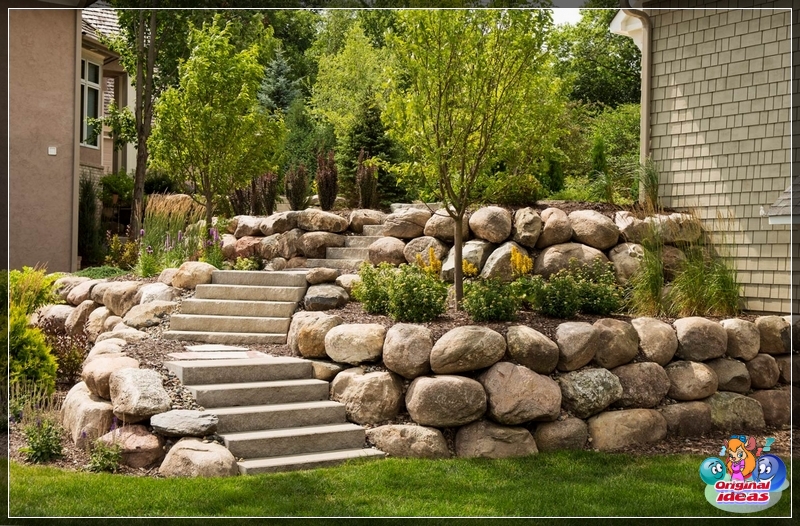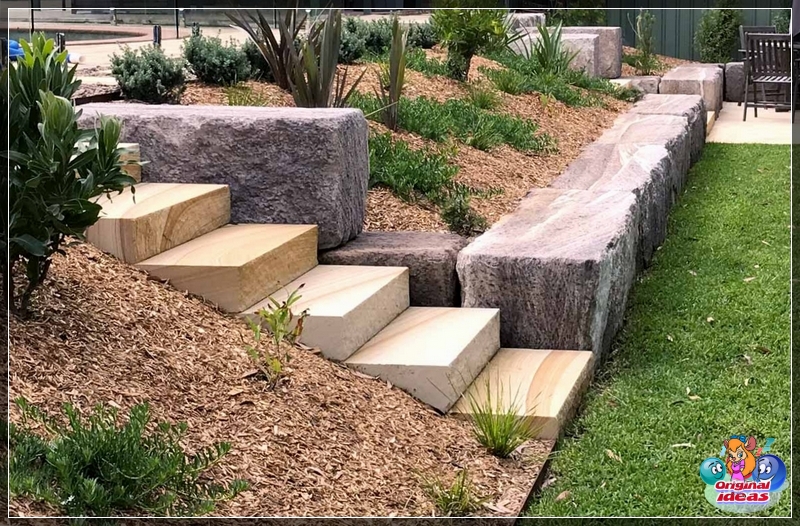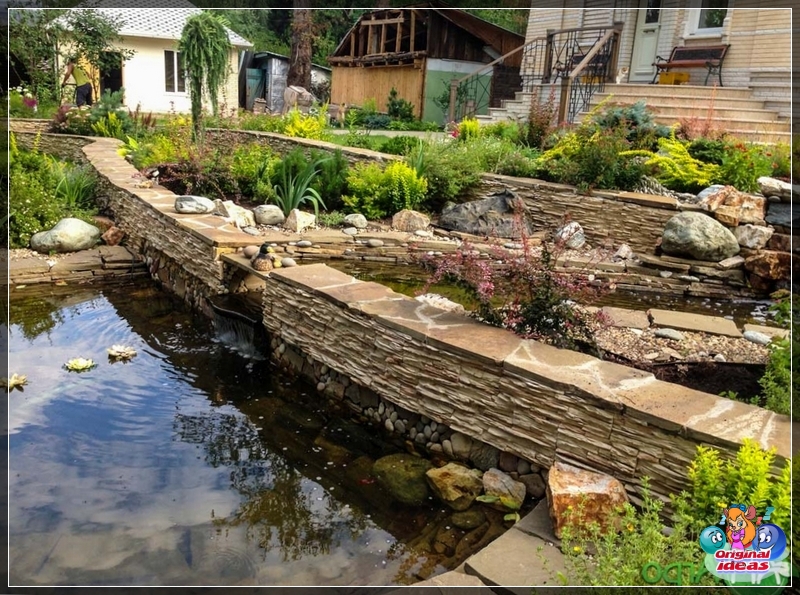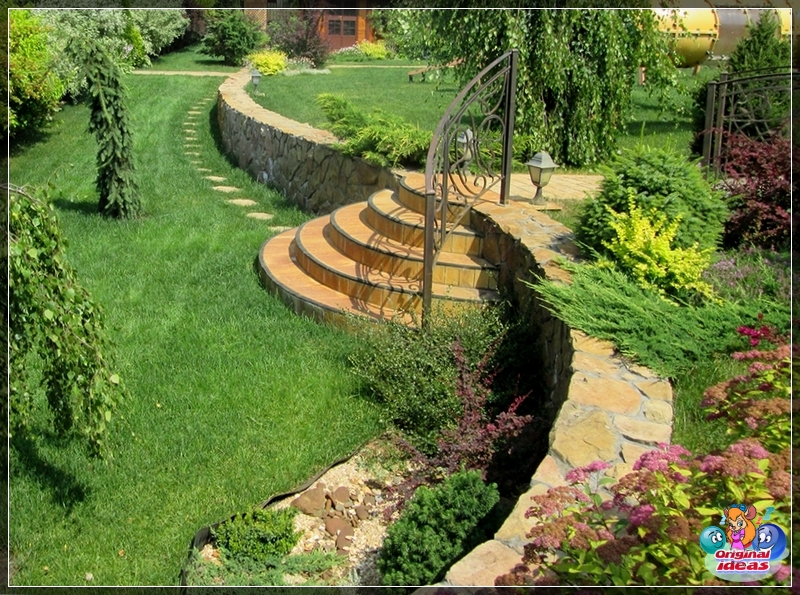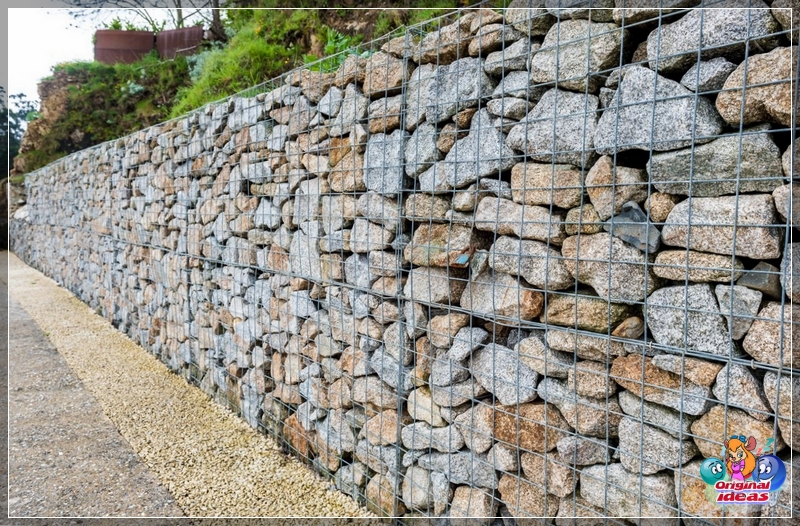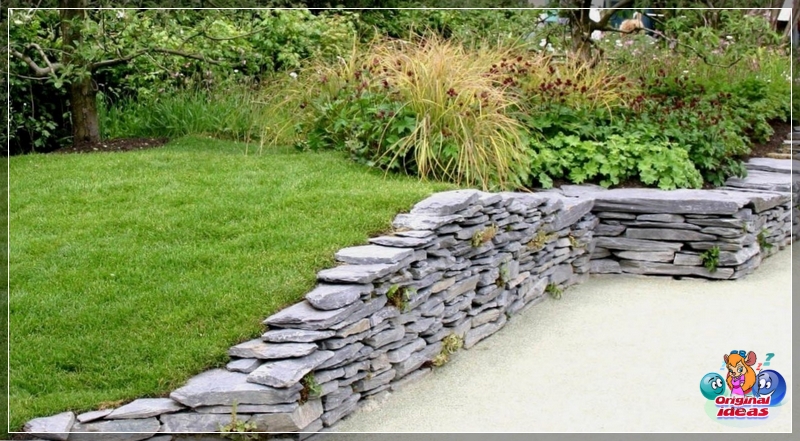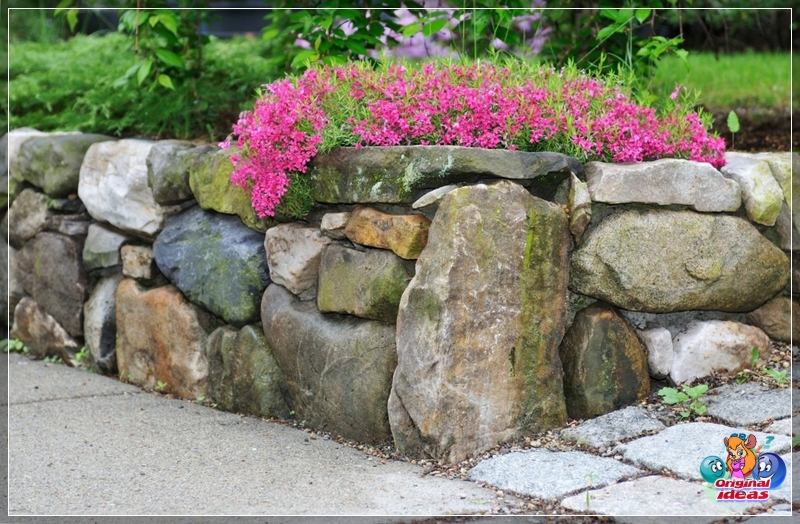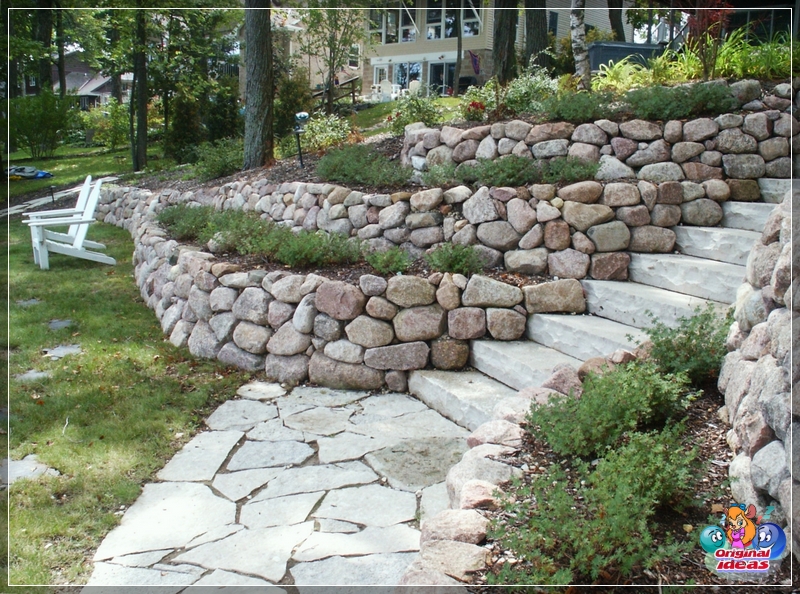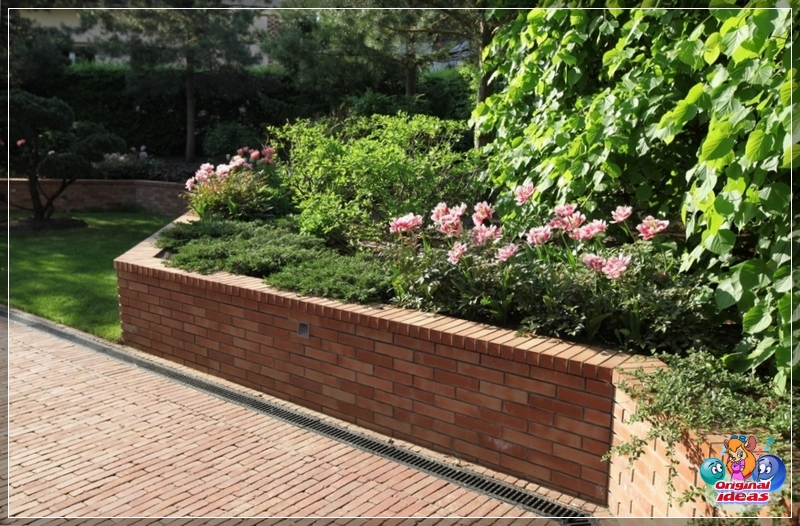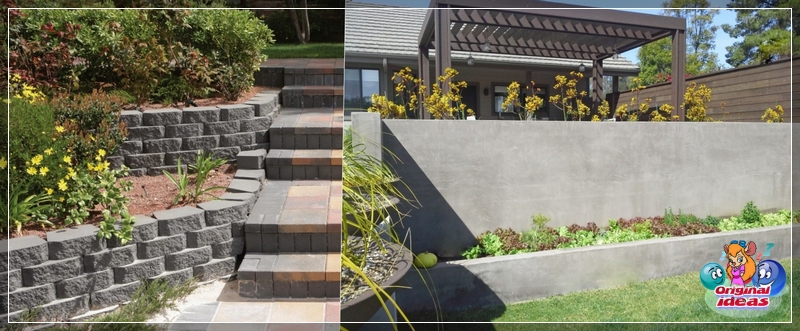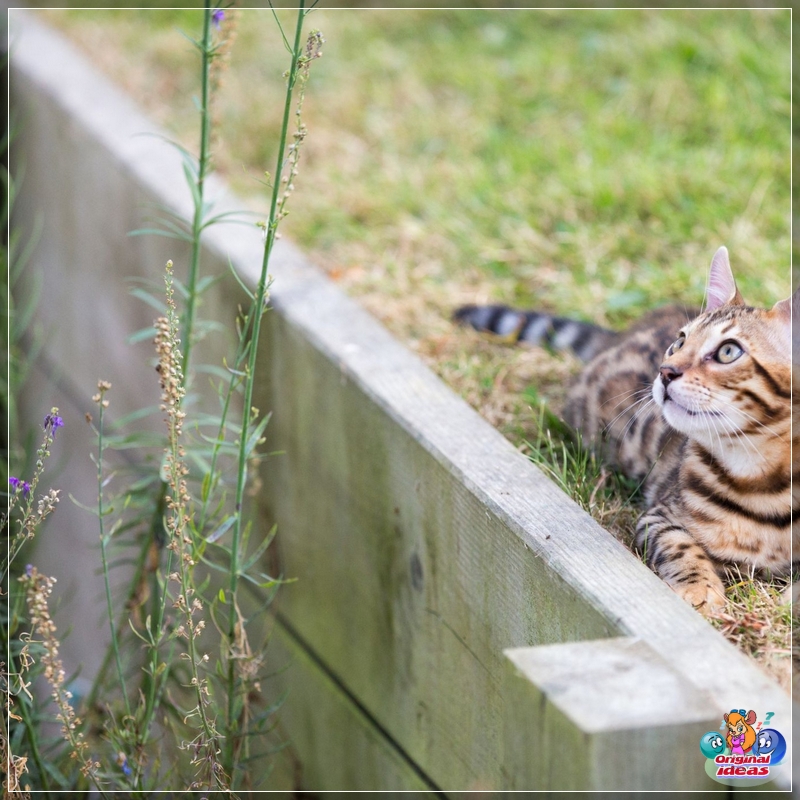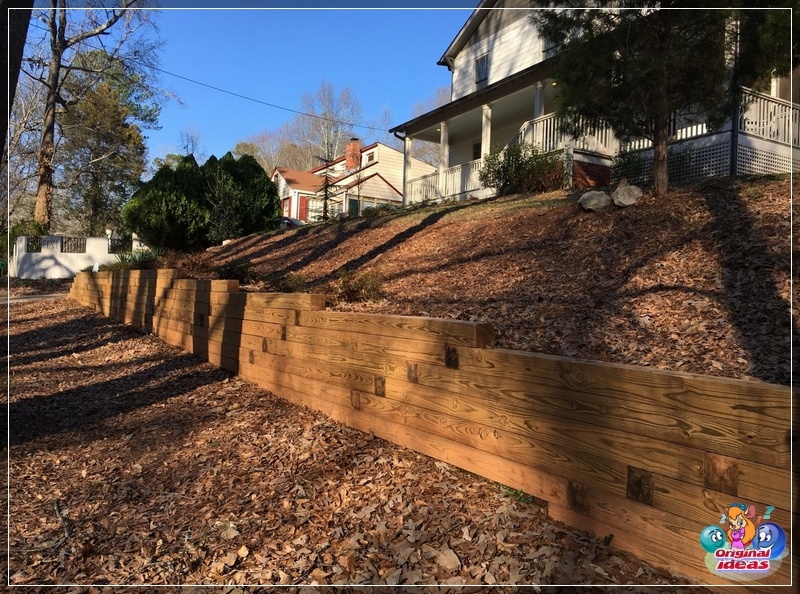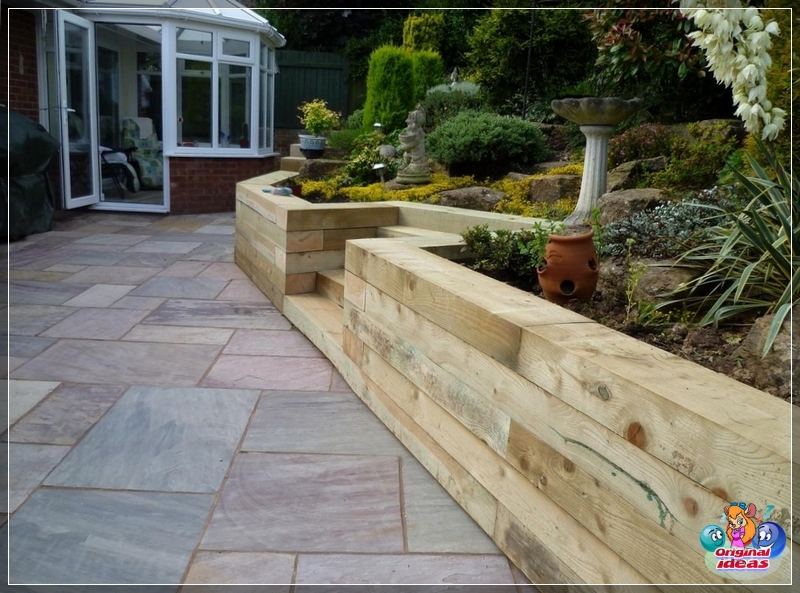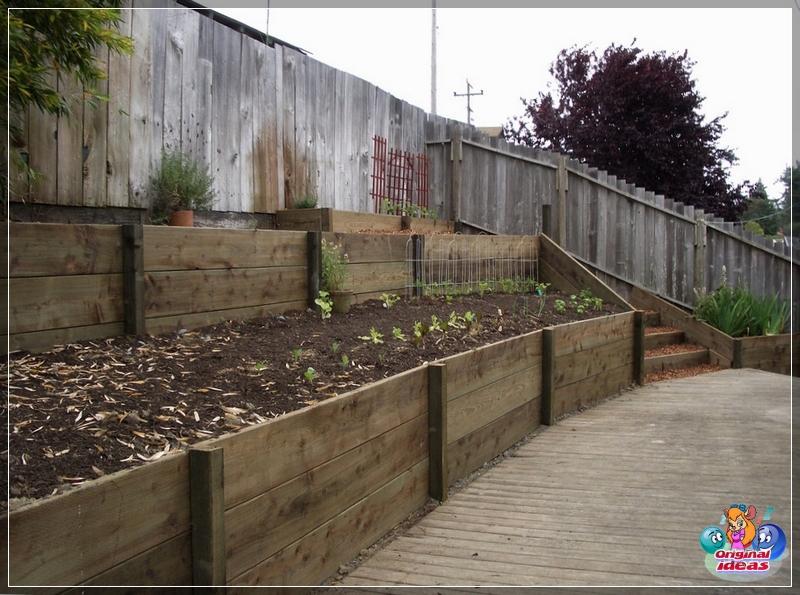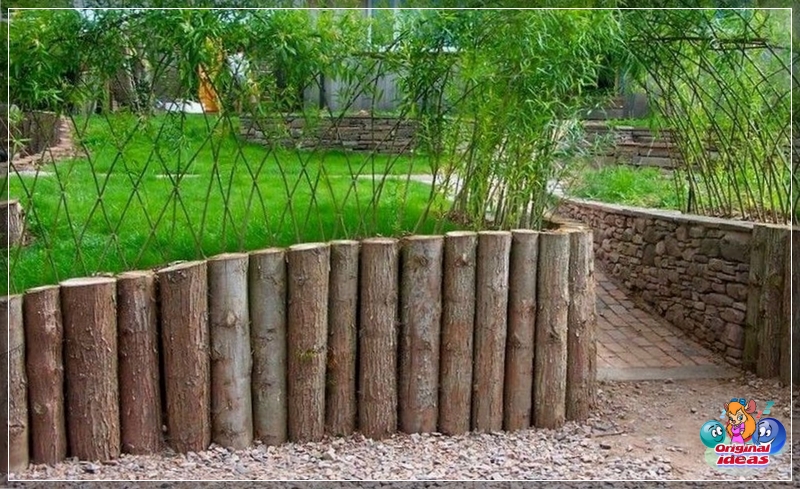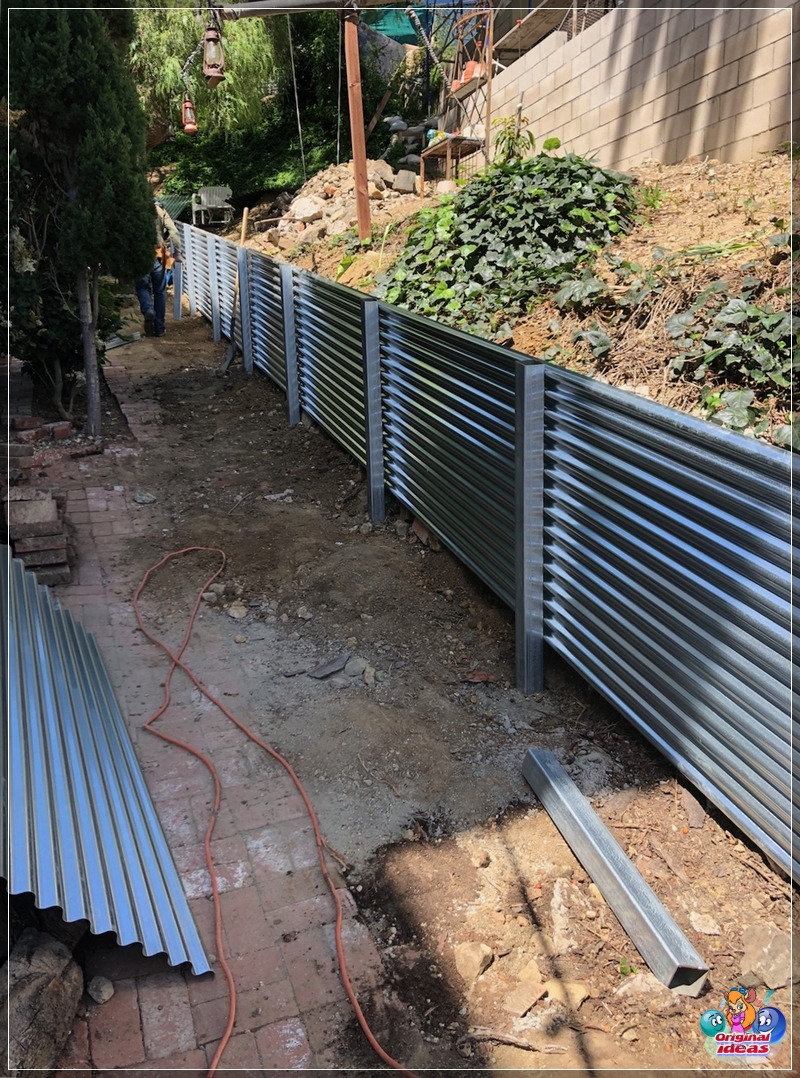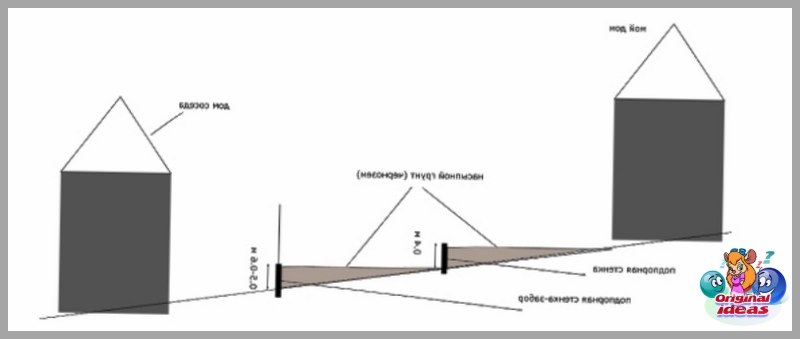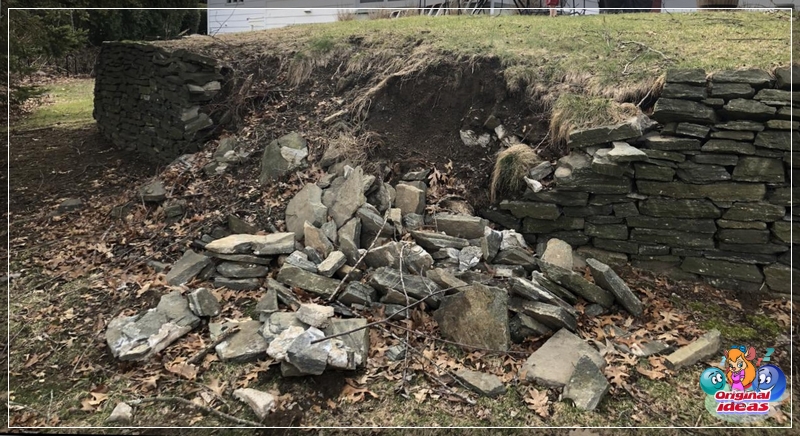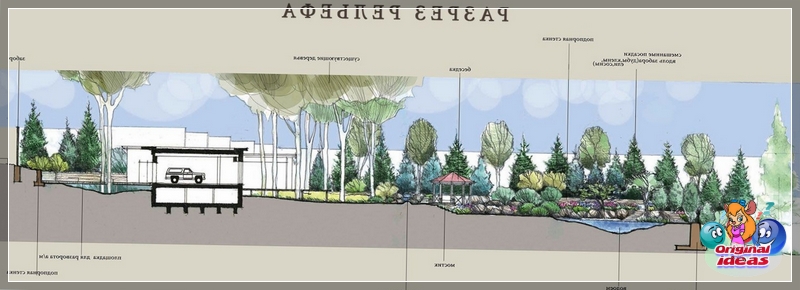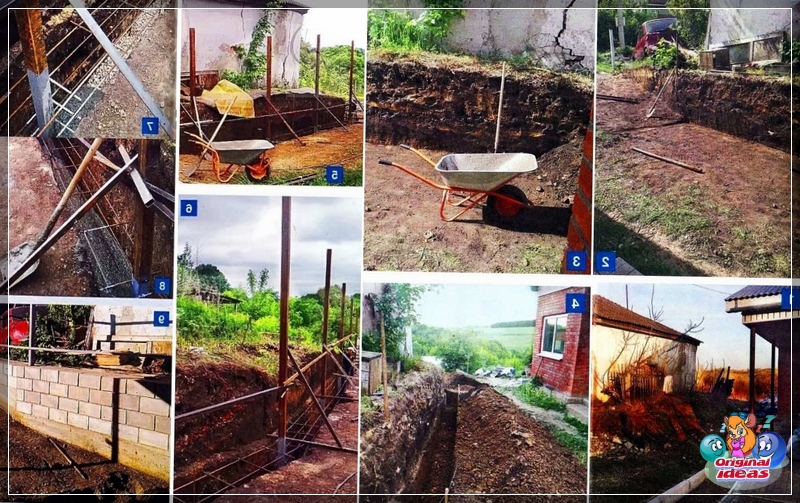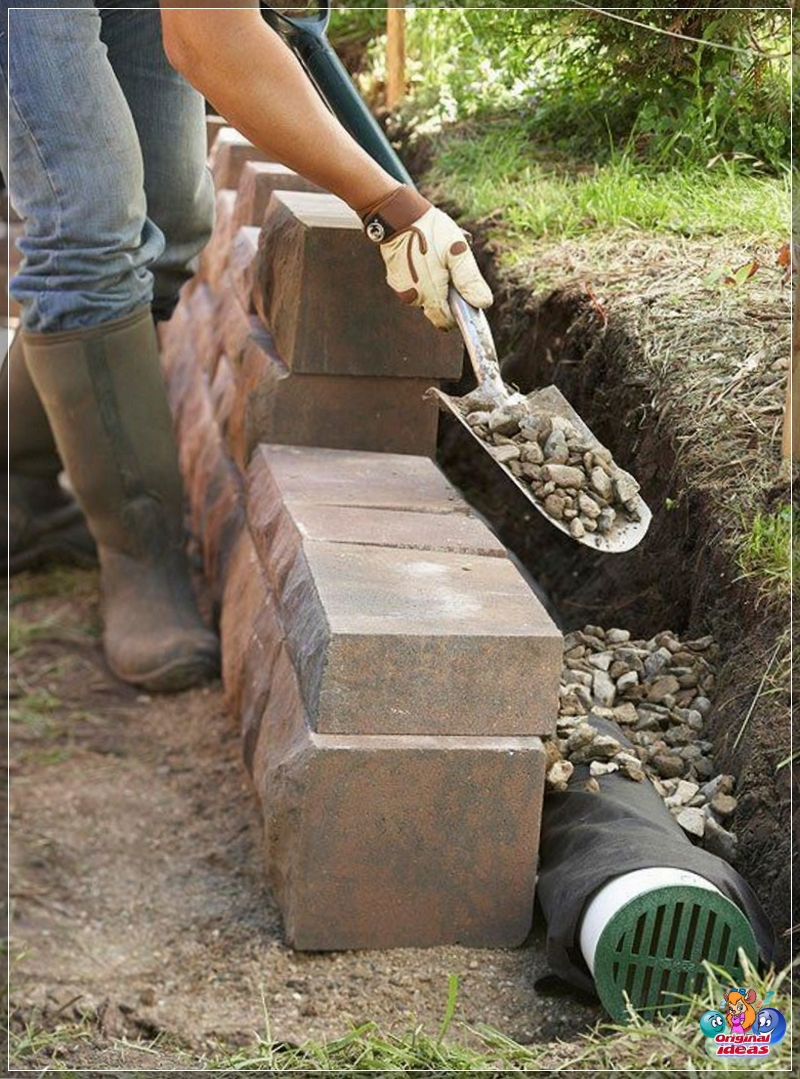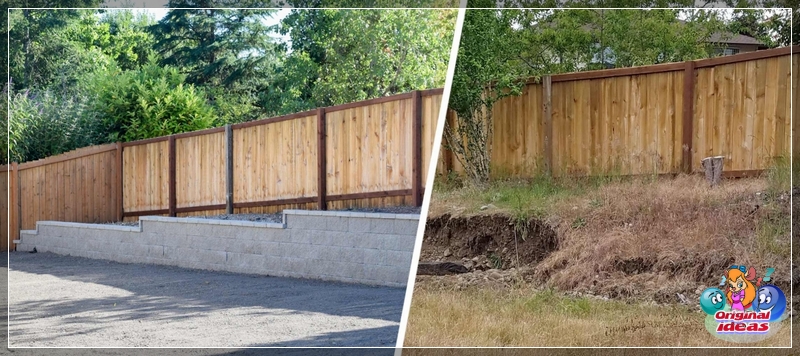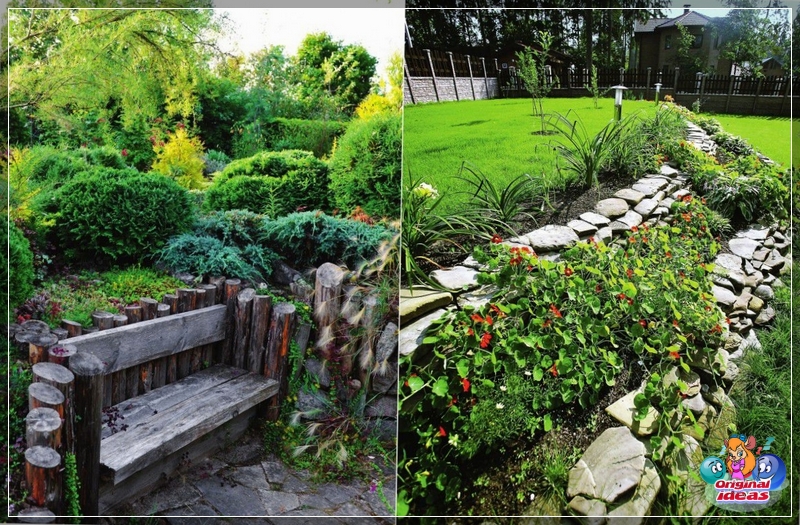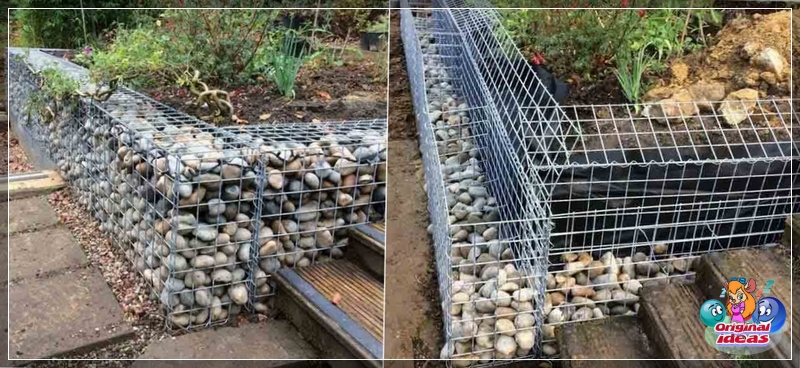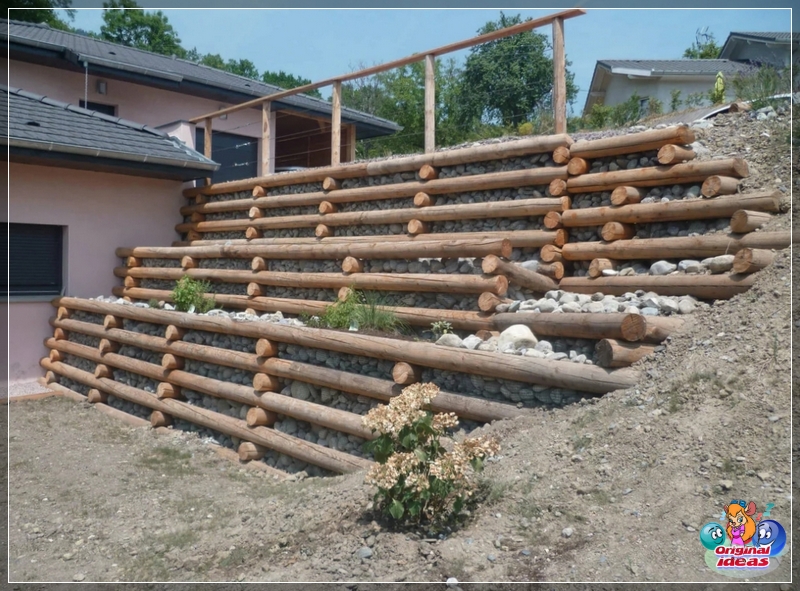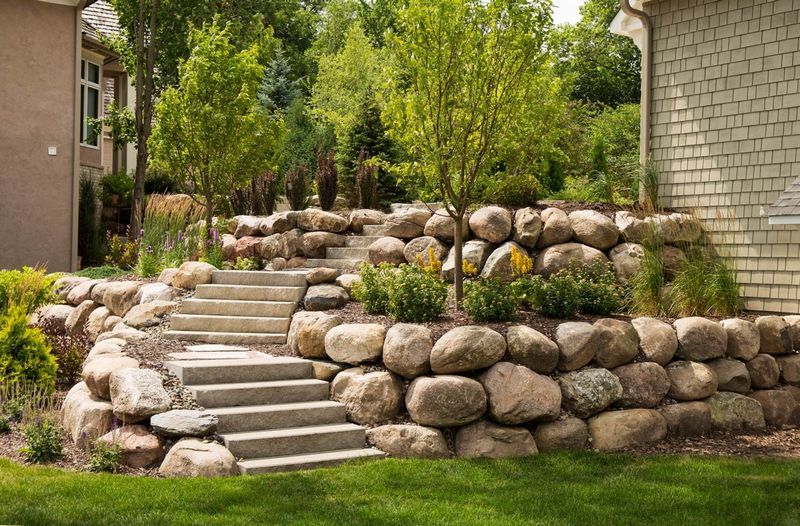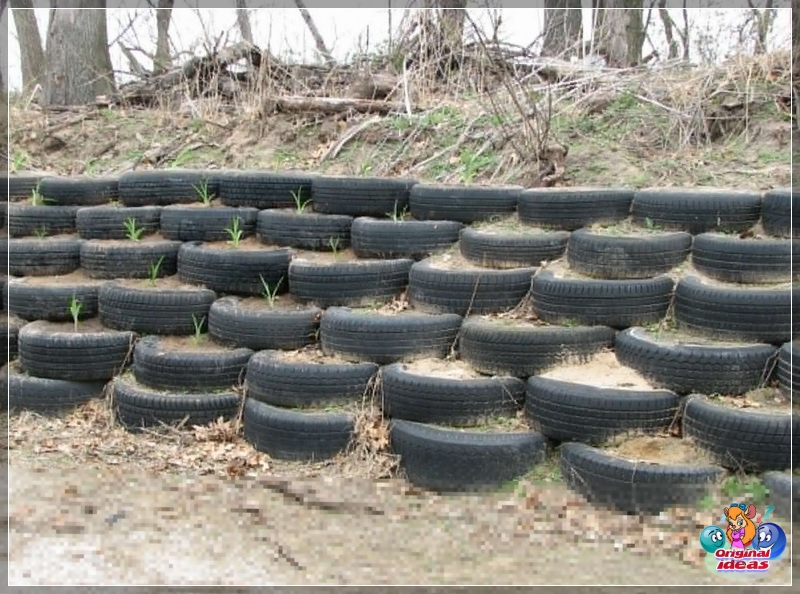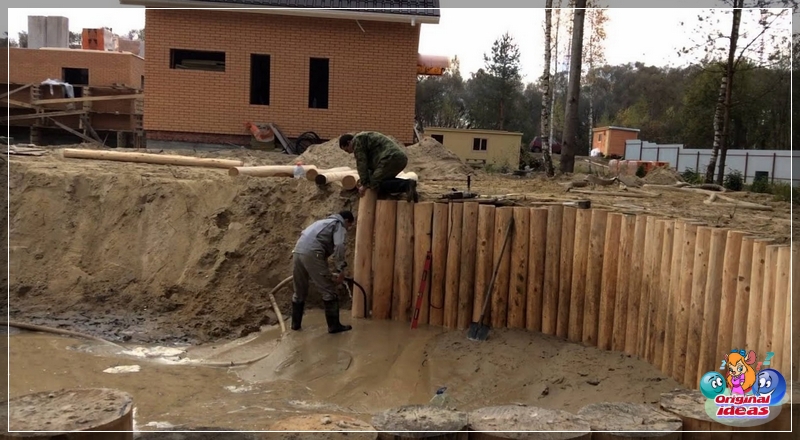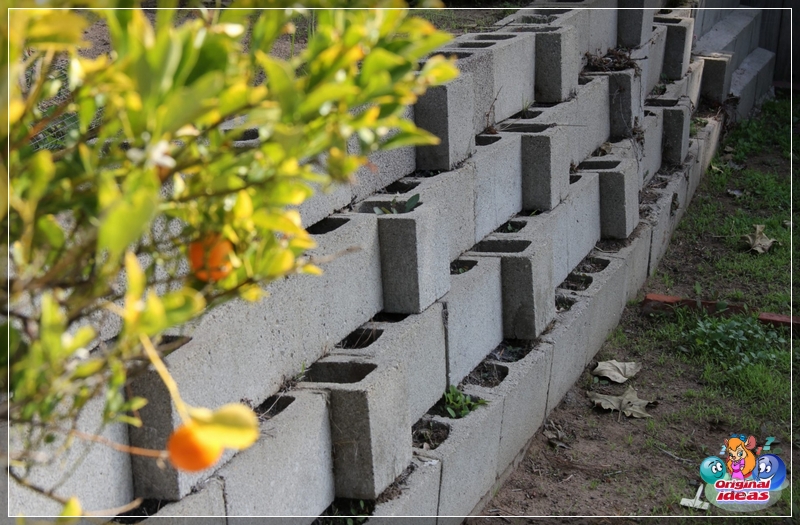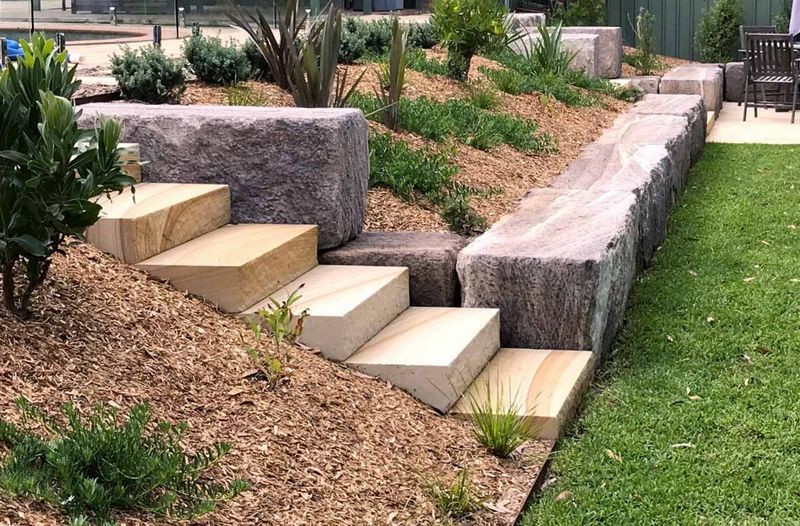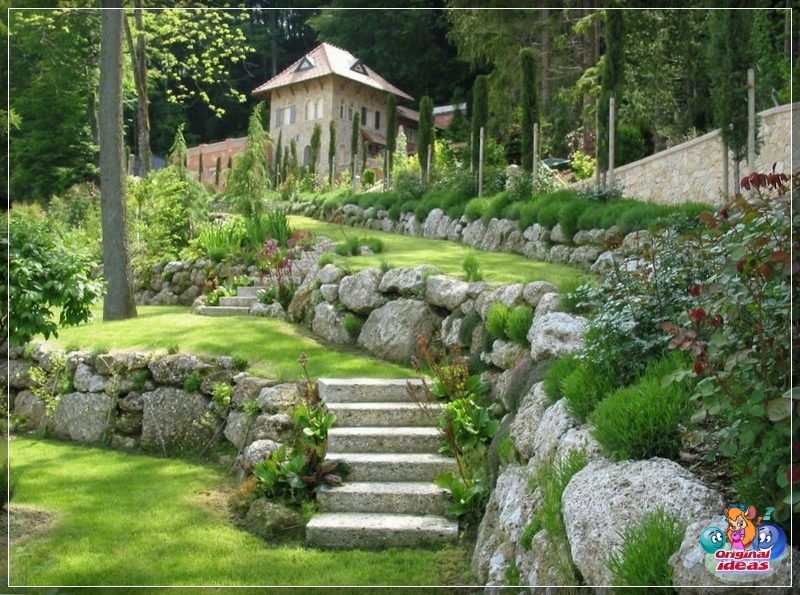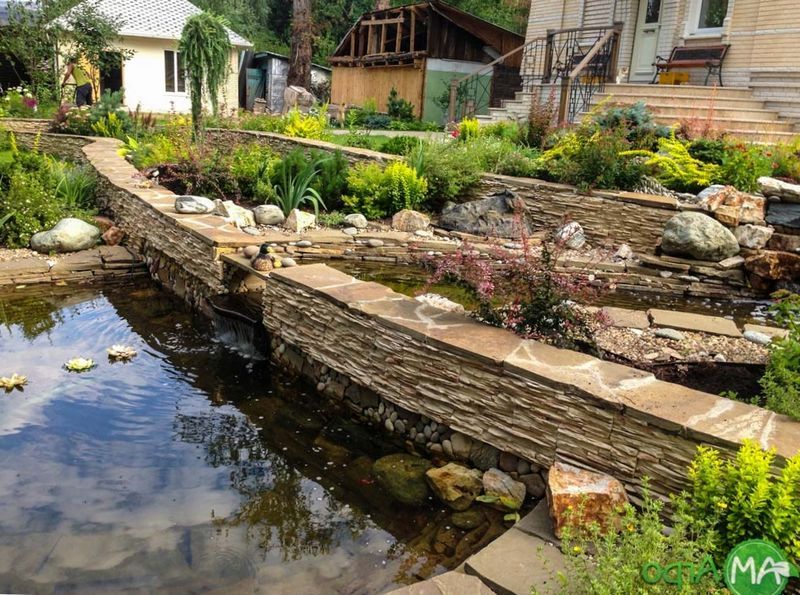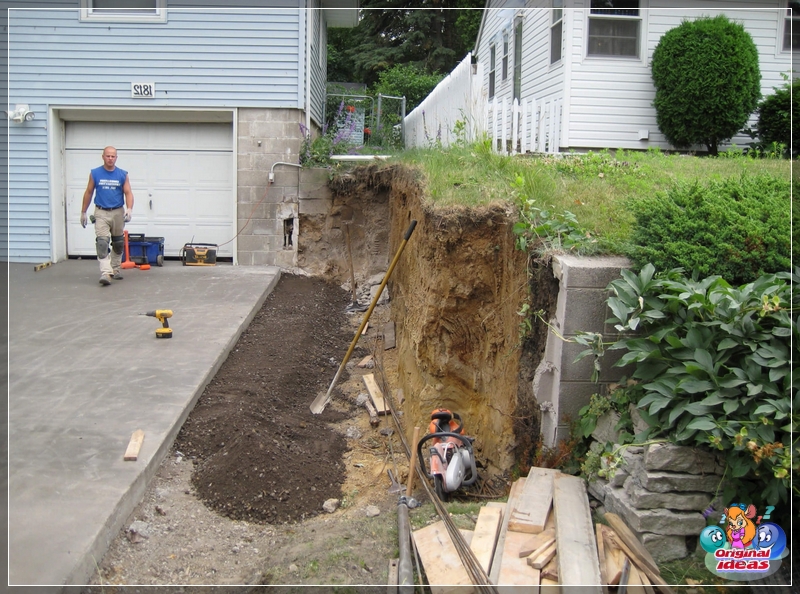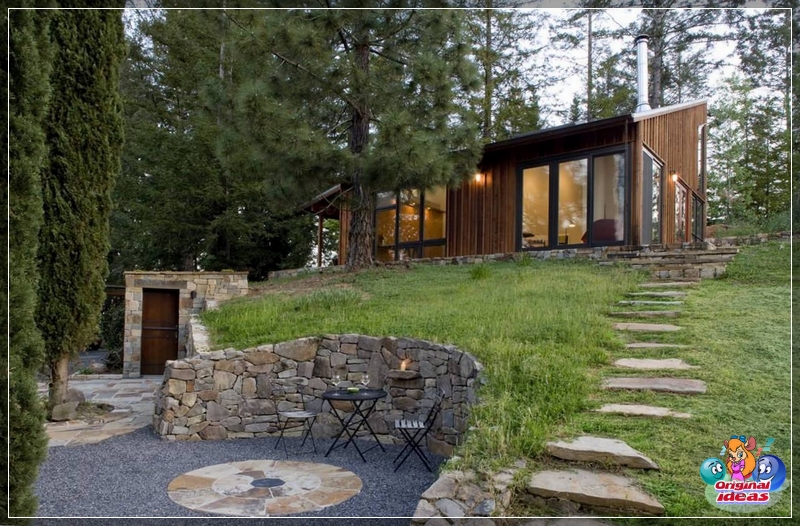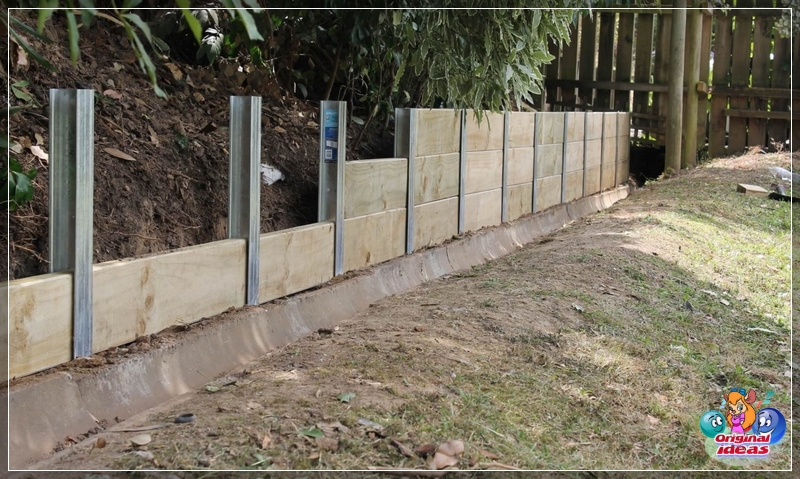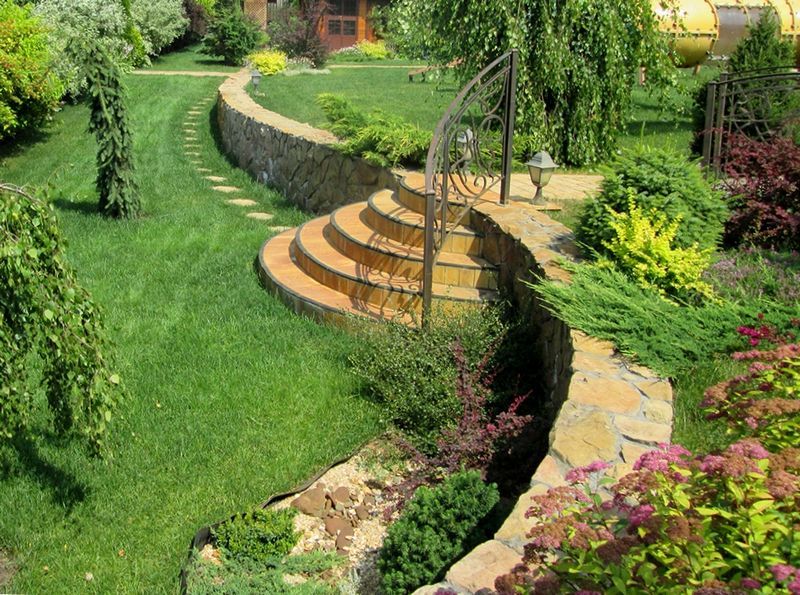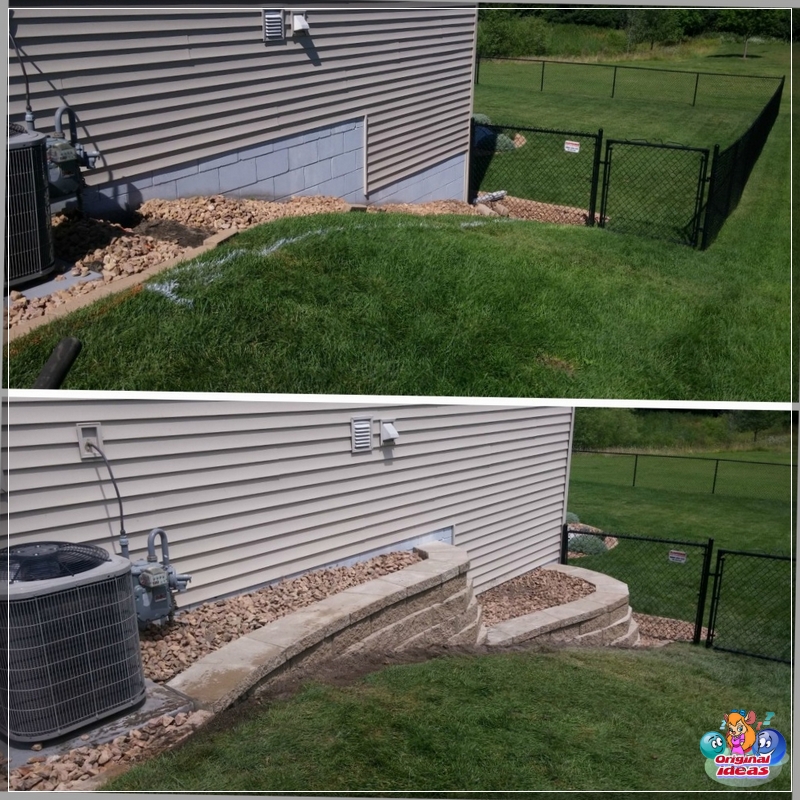The arrangement of country houses, cottages and summer cottages does not go without difficulties. One of them can be considered the unevenness of the land plot, and the presence of a slope on it. However, if you have experience and professionalism, you can equip any territory.
To highlight the area of the terrace, garden, vegetable garden or gazebo on a plot with a slope, use a retaining wall. It is located at the boundaries of uneven surfaces in order to prevent the occurrence of landslides, landslides and leaching of fertile land. Also, this design perfectly complements the design of the entire territory.
On an uneven plot, terraces with retaining walls can be arranged, on which the garden area looks good
Retaining wall device
It is not at all difficult to create a courtyard wall if you follow certain rules and regulations, take into account the peculiarities of the soil, use high-quality materials and carry out drawing work. You can create a wide variety of layouts and implement your ideas.
Before building a retaining wall on a site with a slope, a drawing is needed. It should be drawn taking into account the functions of the structure, and there are only two of them: decorative design areas or strengthening the soil layer.
The wall structure consists of the following important parts:
The foundation serves to strengthen the entire wall. It takes all the weight of the structure, excludes washing by waters.
The wall from one side will be in contact with the waters. This side is internal. There is also an outer layer. It is made oblique or even, depending on the chosen layout.
Drainage and drainage act as protective elements. When building a wall, it is imperative to consider ways to drain excess moisture and water, otherwise they will accumulate on the inside of the wall.
Below we describe the main functions of a retaining wall:
zoning of the land plot;
transformation of the landscape;
soil protection and strengthening;
creating a flat area.
Retaining walls are especially necessary for steep slopes. For example, so that the house does not slide and collapse
Classification of retaining structures
Walls are classified according to the decorative materials used.
Natural stone is a common wall construction option. Has increased strength, reliability and exquisite external design. It will serve for many years, will not lose its unique properties even after a long period.
To create stone partitions can be used: slate, pebbles, cobblestone, quarry
Brickwork is also often found in the arrangement of suburban areas. Ease of construction and durability are the main advantages of this option.
The brick retaining wall looks neat and is great for an English garden
Reinforced concrete wall with a decorative pattern - a simple and budget option for constructions.
Retaining walls made of concrete can be either monolithic or made of concrete blocks
Wooden models are inexpensive, but they will last 10-15 years.
A retaining wall made of wood is the easiest to make
Metal structures will give the territory a special look, however, they will corrode and lose their visual appeal.
Galvanized retaining wall will not rust
Depending on the slope, the following types of walls are distinguished:
lying;
gentle;
cool.
A steep slope may require a higher and deeper retaining wall, or even several
According to the method of construction, the following wall options are distinguished:
Monolithic ones are produced from separate large units in factories or are immediately poured into the formwork in the form of rubble concrete and concrete.
Prefabricated options are assembled from different materials right at the construction site of the wall.
Taking into account the depth of the structure, the following options are distinguished: products of deep and shallow installation.
Depending on the height of the structure, there are high, medium and low options.
The structure of the retaining wall depends on the version of the outer cladding
If we take into account the stability of the retaining elements, then they are divided into the following subspecies:
Solid products withstand shear and tipping due to the high mass of the walls. They have a large material consumption and labor intensity during construction.
Semi-massive elements have a wall and a slab lying on the ground. Due to them, maximum stability is ensured.
Thin products are made of reinforced concrete slabs. They are stable due to the bulk of the soil layer.
Thin models are resistant due to the crushing of the base in the ground layer.
Each option has its own characteristics of structure and operation, so it is important to think over as clearly as possible which models are right for you.
How to create a stable wall?
If you do not take into account natural stress factors, then the retaining wall can collapse
Retaining walls must have maximum resistance to environmental influences and high pressure. Otherwise, the entire structure will collapse in the first year of operation. That is why it is important to take into account all the factors that in any way can affect the reliability and durability of the wall. We will talk about them further:
swelling of the soil during winter periods;
the strength of the winds (if the height of the wall is more than two meters);
vibration frequency (for example, the site is near a railway);
seismic events (they are different in each region);
soil erosion by rainwater.
It is important to take these features into account and create a solid foundation for the wall, choose the optimal thickness of the structure and follow technical standards.
Wall construction stages
The erection of a landscape wall in the backyard territory is carried out subject to a certain installation technology. It includes several stages:
Analysis of the territory, soil, degree of inclination, seismic features of the region, and so on.
Calculation of the parameters of the future wall: foundation, body and drainage system.
Clearing the area from debris and weeds, leveling certain zones.
Digging a trench.
Formwork installation.
Laying a sand and gravel pillow.
Installation of reinforcing bars.
Pouring concrete mortar for the foundation.
Drying the structure.
Compliance with all stages of wall construction ensures a long service life of the structure.
When arranging a retaining wall, do not forget about the drainage system and drainage
Highlights when creating a retaining wall
A high-quality concrete retaining wall on an area with a slope is a great way to create a unique landscape of the territory. In order for the structure to serve for a long time and reliably, it is important to consider the following important tips from professionals.
Prepare a drawing of the future wall in advance, while taking into account your wishes and the seismic features of the region.
Use only reliable and durable materials that guarantee the durability and strength of the structure.
Construction to be carried out only on stable ground.
Consider soil freezing. It should be no more than 1.5 meters from the soil surface.
The height of groundwater should be no more than 1 meter.
That part of the structure, which is located above the soil surface, should have a height of no more than 1.4 meters. If you want to build walls higher, you should call the master.
You can clearly see how the site is being transformed before and after the installation of the retaining wall
Before construction, it is important to carry out all calculations, take into account the pressure and mobility of the soil. Even if you have an uneven area, constantly high humidity levels and so on, there is always a solution.
Before building a courtyard wall, it is important to consult with a specialist, calculate all the pros and cons, choose reliable materials and hire craftsmen. The durability of the structure and its aesthetic properties depend on high-quality preparation for work.
